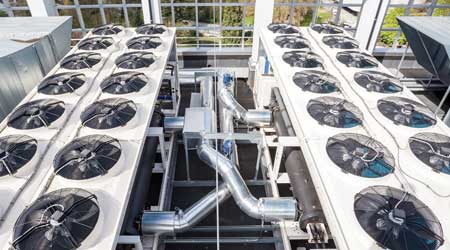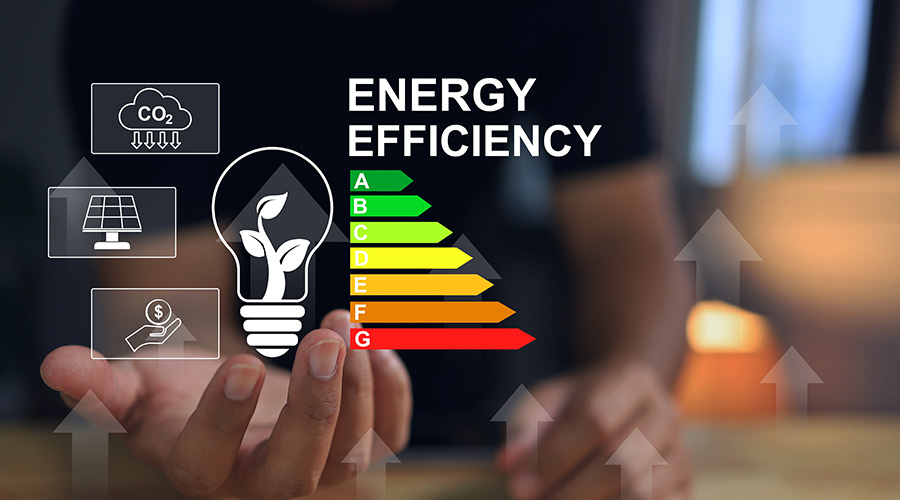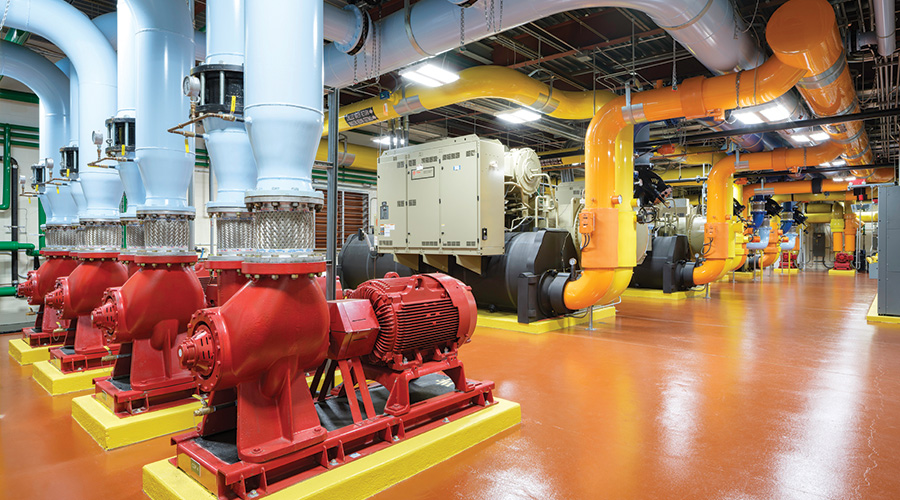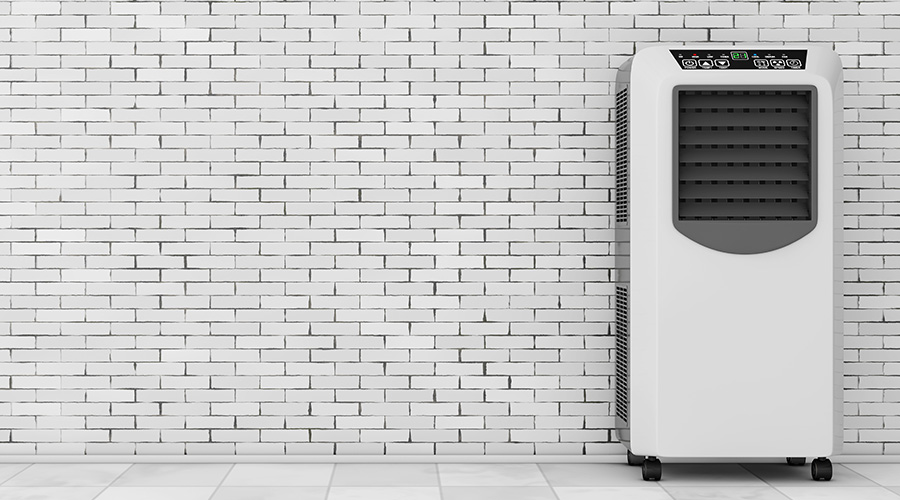4 Strategies for Cooling Efficiency in Existing Buildings
While it may seem trickier, reducing energy use in existing cooling systems is possible. Follow these four tips.
While it might seem that legacy buildings are stuck with the limitations of their existing equipment, energy reduction is possible when retrofitting existing equipment, retro-commissioning a building, and even when just instituting new best practices. These can create lasting change and even continuous improvement over time when executed correctly.
1. Turn down mechanical cooling when possible. Modern building controls have a number of energy-saving options. Temperature reset is a critical strategy in saving energy for air-side, hot water, and chilled water systems. When the demand for cooling in the building is low, terminal units (variable air volume or fan powered boxes) are likely at or near their minimum positions delivering the minimum amount of air required per code to each space. In this scenario, a modern building automation system would be able to sample all the terminal boxes, find the “worst case” zone, and increase the delivery air temperature to offload the chiller plant.
This is not a one-size-fits-all option, but may be an ideal strategy for a building with an older chiller plant and newer fans. However, modern chillers are much more efficient than the energy hogs of the past so sometimes fan energy is more wasteful. In that case, a VFD and static pressure reset is critical for energy savings.
Another technique for energy savings is optimized stop and start (often referred to as morning warm-up and cool-down) operation. This control strategy utilizes machine learning to calculate the mass of the building and compare the outside air temperature with internal temperature and temperature setpoint to determine the necessary time to start or stop equipment.
Take a facility whose building engineer comes in at 5 a.m. and turns on equipment at 6 a.m. to get the building warmed up or cooled down for an 8 a.m. start. With the control system described, the BAS would calculate that the chiller plant needs to start at, say 6:32 a.m. on a given day to accurately bring the building temperature down from its 85 degree Fahrenheit setback temperature to reach the 75 degree Fahrenheit daytime setpoint. The BAS in this scenario has saved the building 32 minutes of unnecessary cooling.
2. Plan ahead for maintenance. Often, the best energy-saving opportunities in a building come down to operations and a facility’s low hanging fruit. Replacing filters, cleaning strainers, and performing routine maintenance on all pumps, fans, and larger equipment can save substantial energy in your facility. The best design is no match for a well-maintained building.
Information about operations can trigger design decisions. A best practice is to compare annual utility/operating costs to similar buildings in the same market. Higher comparative costs could reveal the need to upgrade the system.
3. Take the opportunity to plan. With older systems comes the need for additional maintenance. Systems often become less reliable either through communication failure to the BAS or equipment failure. The extra hours spent maintaining an older system can be expensive and will eventually exceed a full-time equivalent. Additionally, outside contractors are typically necessary to complete some of the more extensive maintenance, which is costly and can be disruptive to tenants. Merely replacing equipment in kind after a failure could ignore new, more efficient technologies and control strategies and may not address why the system failed.
Seize the opportunity to have the system studied by an engineering firm to better understand its operation and potential new control strategies and opportunities for energy saving investments that may be available. There are often rebates available from the local utility to help offset the infrastructure costs of a more efficient system.
4. Ensure your BAS is providing predictive data. Another overlooked opportunity for saving energy is retrocommissioning. Through the use of trend data and measurements from the BAS, it is possible to analyze a building’s demand and performance and recommend best practices for moving forward.
Retrocommissioning extends beyond just the cooling systems to building lighting and overall energy use. Through well-placed control strategies and equipment shortfall diagnosis, buildings stand to save up to 15 percent of their energy use year over year with retrocommissioning.
Automated monitoring and trending of data from equipment give the option of future, more energy-efficient control strategies, and at a minimum help identify the root cause of a problem should there be a catastrophic event.
Meeting efficiency goals
Each facility will have a unique set of energy efficiency goals and set of circumstances that will dictate which strategies are possible. These include, but are not limited to, existing infrastructure, budget constraints, architectural parameters, and personnel available to facilitate them.
Regardless of which strategies are right for your building, it’s possible for any facility to reduce energy, emissions, and operational costs anywhere between 10 to 40 percent, while still maintaining important facility priorities.
Julia Ingersoll, P.E., CDT, is a senior mechanical engineer with McGuire Engineers, Chicago. Katie Repko, WELL AP, is a mechanical designer with the firm.
Related Topics:













